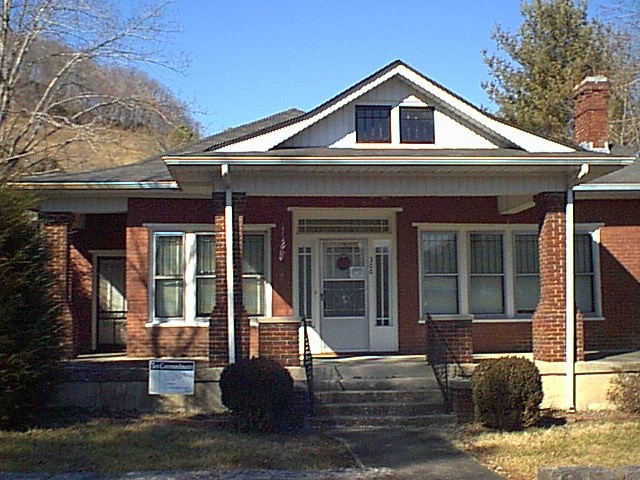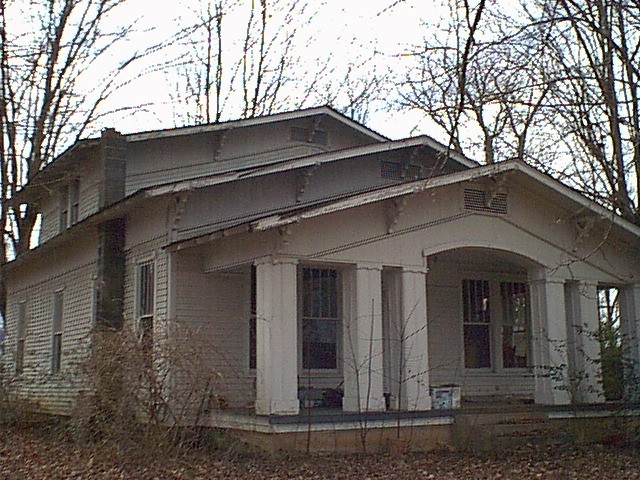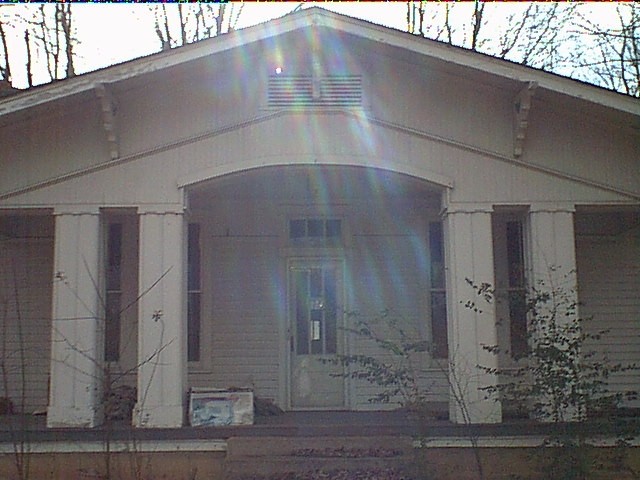|
Sears and Roebuck Mail Order Catalog Homes
|
|
Mail order catalogues have
been around a long, long time. It isnít anything unusual to open a
mailbox today and find at least two or three of these type magazines
included with our regular mail. Most of the time, they end up in File
13, but after I did some checking, it occurred to me that maybe we
should not be too quick to toss away something that in years to come
might be worth some money. A good example of how valuable mail order
publications from years ago are already becoming is the fact that one
recently sold on Ebay for $125.00. That amount of money was paid for a
catalog published in 1908 that listed homes available by mail order from
Sears, Roebuck and Company. If you are one of us who are home/garden
cable tv fans, you probably know why the interest in this type of thing
is so popular right now. Sears and Roebuck homes are highly prized
possessions.
Many people are not aware that Sears and Roebuck sold houses by mail order, and someone who did not know any better might have a tendency to think that a home bought by mail order couldnít possibly be worth much. But how very wrong that notion is! I read recently that in a ritzie neighborhood in the state of Maryland, a Sears and Roebuck home recently sold for $816,000.00. If you find that surprising, read on. In a book by Rosemary Thornton entitled The Houses That Sears Built, Ms. Thornton says: "Between 1908 - 1940, more than 75,000 Sears homes were built. Sears kit homes contained 30,000 pieces, including 750 pounds of mails, 27 gallons of paint, and a 75-page instruction book. Sears estimated that the average carpenter would charge $450 to assemble those 30,000 pieces of the house. The painterís fee - $34.50. Other estimated skilled labor would cost $1.00 an hour. Prices for these build-it-yourself houses ranged from $147.00 to $6,000.00. After selecting a house design from the Sears Modern Homes catalog, customers were asked to send in $1.00. By return mail, they received a bill of materials list and blueprints. When the buyer placed the actual order for the home building materials, the $1.00 sent in earlier was credited toward the purchase. A few weeks after the order was placed, two boxcars containing 30,000 pieces would arrive at the nearest train depot. A 75-page leather-bound book was included that instructed the homeowners how to assemble those 30,000 pieces. The book also contained what could be referred to as a warning or probably some good advice: Do not take anyoneís advice as to how this building should be assembled." A fellow named Bob Jensen tells about Sears Catalog Homes in an article he has written entitled "The American Dream by Mail Order". Part of what he has to say in that article is: "Sears homes were not prefabs, but accurately cut kits that either the home buyers built themselves, or hired a general contractor to build for them. Anyone who could drive nails or turn a screwdriver could build these houses. The Sears home kits were shipped from Cairo, Illinois to their destination by box car since there were no trucks big enough to ship them in. Sears not only offered those homes for sale, but also arranged the financing. This set Sears as one of the biggest lenders in the country. Most financing was for five to fifteen years of monthly payments with a 6% yearly interest."
|
|
This home was once known as the Bailey Butler home located in Gainesboro.
|
|
The Windle home located on Donaldson Avenue in Celina
|
| The home/garden
network on cable television has broadcast many programs about the
restoration and preservation of the Sears and Roebuck homes and of the
growing interest that has happened in the last several years in this type
home. I always enjoy seeing these programs mainly because Iím a big fan of
preservation and restoration of any older homes. Itís always good to hear
about people who care enough to want to make sure these treasured,
one-of-a-kind homes continue to exist. The older architecture found in the
Sears, Roebuck homes is absolutely wonderful. Some of the characteristics
found inside the Sears homes are described as having large cove moldings
that join the walls to the ceilings; niches for telephones, books and
flowers; decorative archways or crowns on top of doorways; built in
breakfast nooks, bookcases or cabinets that were unique. So it was very
exciting to me when I happened upon, quite by accident, a craftsman style
home right in the middle of Celina. After doing a little investigating
about this house, this is what I learned: Beth (Windle) Moulton grew up in
the house on Donaldson Avenue in Celina. This wonderful old home was once
owned by her grandparents, Porter and Fannie Windle. Porter Windle was
originally from the Monroe area of Overton County. The home was passed
from Porter and Fannie Windle to Bethís parents, Archie Neville Windle and
wife Doye Knight Windle. It is believed that J.R. Gray and wife Hallie P.
Gray may have been the people who had the house built. According to Beth,
her family believes the house was ordered from a Sears and Roebuck
catalog, and reached its destination in Celina by way of steamboat. This
story has been handed down through Bethís family for many years, yet there
are those who think the house was designed and constructed by a local
carpenter. Regardless, Beth grew up hearing the story that the house was
ordered from Sears and Roebuck. And it is also quite possible that both of
these stories are correct since the blueprints and all the materials used
to construct a Sears home could be ordered from the mail order catalog,
and local carpenters hired to put all the pieces together. Sears provided
just about everything needed for their mail order homes, but one thing
that wasnít included was the carpenters. My investigation into the Windle home in Celina then led me on to Gainesboro to a house located at 300 Dixie Avenue. It is known as the Bailey Butler house, a one-story brick veneer bungalow built around 1920. This one of several homes in Gainesboro that have been listed with the National Register of Historic Places. Although no one knows for an absolute certainty that this house in Gainesboro was one of the many made by Sears and Roebuck, it certainly has many characteristics, as does the one in Celina, that match the plans Sears offered. The hipped roof, the concrete and stucco foundation, square brick columns, windows with five-over-one vertical light sash are just a few of the features found in many Sears homes. In later years, the Butler home has been owned by Zula Chapman who sold it in 1952 to Robert and Louise Smith. It is presently owned by the New Hope Baptist Church. The church secretary, Beverly Matthews, lives in the home at the present time. When I spoke by telephone with Beverly Matthews, she told me she is of the understanding that the home is a Sears and Roebuck mail order home. I might add here that homeowners who chose to finish their homes with brick bought them locally. Brick was another item that Sears did not provide. One of the ways that is suggested should someone want to closely investigate one of these homes is the check out the rafters in the attic space of any home that might be thought to be a mail order catalog home. Sears and Roebuck much of the time stamped the lumber with an emblem bearing that company name, and if such a seal is found on a rafter or other building material, that would pretty much tell the story. But not finding such a seal would not necessarily mean the home was not a mail order catalog home. In other information complied by Rosemary Thornton, she says that a Sears home called "The Hillrose" was re-created in Battleground, Indiana several years ago by architects who carefully studied the old mail order catalog in which it was offered. Ms. Thornton also tells about the historical community of Carlinville, Illinois, where the local chamber of commerce has created an entire tourism event around that townís group of 152 Sears homes that fills 12 blocks. The townís annual Christmas festival draws thousands of tourists from hundreds of miles away. Another story was told about a man whose mother ordered a kit in the 1920's told how his mother could not decide between two different houses. She liked the top half of one house and the bottom of another. She cut these two pictures out of the catalog and taped them together. She sent this taped creation to Sears with a note asking if they could send her this house. Their reply was "We sure can."
|
|
A ghostly appearance seems to show in the Windle home in Celina.
|
| Ms. Thornton is of
the opinion that most people living in these homes that began in the pages
of a mail-order catalog consider Sears homes to be a treasure. And like
all hidden treasure, these homes just need to be dug out, polished up a
bit, and then set out for all the world to cherish and enjoy.
And thatís exactly what I hope Beth Moulton will be able to do someday with her childhood home so that it may be preserved as it surely deserves to be. And even if it may not be possible to prove as an absolute certainty that this home was from a mail order catalog, it still has my vote of confidence that the story Bethís family passed along is correct. After looking at the house, even from some distance away, I, for one, donít have a bit if trouble believing that story. I can only wonder about how many other homes in this area that may have made their journey a good bit of the way by steamboat before reaching their final destination. What a wonderful bit of historical information that also needs to be preserved! Not many people could say that their house traveled on a steamboat before being built. Working on this story has generated a lot of interest in mail order catalog homes, and I wish to thank Beth Moulton, Corrinne McLerran, Johnny McLerran, Brenda Browning, Donnietta West, and Stephanie Ledbetter for all their assistance and interest in the preparation of this story. I really hope that maybe that interest will lead to the discovery of other homes nearby that originated from a mail order catalog.
|


